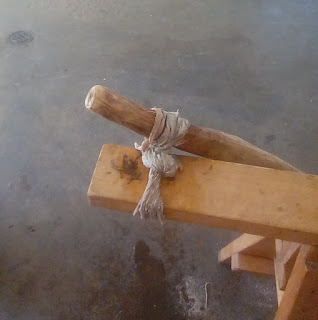Archery Nocks for Thin Shafts - or any shaft.
- FIRST OPTION (least preferred)
Shave the sides of the dowel to make space for a piece of wood which will become the nock wall. You want to file center focused, until the dowel is the same width as your string; if the space is broader than the string, it will make the arrow not only loose in the groove when nocked ‐ and thus uncertain - but also makes your arrow harder to develop accuracy.
Prepare appropriate pieces of wood which will become the walls of the nock.
Saturate sinew for the nock bind.
Heat thick hide glue and cover the pieces of wood. Place the wood on the dowel and bind with glue covered sinew - always use a generous amount of sinew to make a robust nock.
Cover the bind, and flood any open crevasses and spaces with glue. Allow to dry, then clean up the nock space, filing any sharp edges and the string groove
It's messy, but they can be strong, when made to be.
- BEST OPTION
Alternatively, I prefer these: the wings of the nock may break during the process of making the nock - take is slow and be carefull.
The end of the shaft is breifly boiled, heavy lace is quickly wrapped at the depth the string will sit, the split is made in the center, and the wings carfully bent out.
I wrap the loose lace end through the split and prop the split open with a small stick
After cooling, the sinew is wrapped bellow and arround the nock.
The feel of these while being nocked is far preferred to the nock above.









